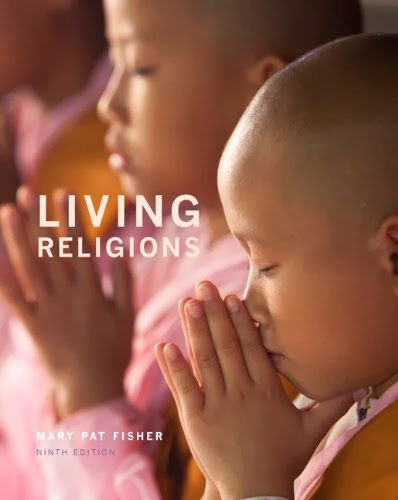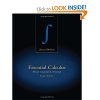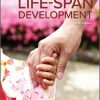Test Bank Living Religions 9th Edition Fisher
$35.00 Original price was: $35.00.$26.50Current price is: $26.50.
Test Bank Living Religions 9th Edition Fisher
Test Bank Living Religions 9th Edition Fisher

Product details:
- ISBN-10 : 9780205956401
- ISBN-13 : 978-0205956401
- Author: Mary Pat Fisher
Description:
Chapter 1: Religious Responses
In this test bank for Living Religions, Ninth Edition, there is a new system for identifying the difficulty of the questions. Questions are now tagged according to the four levels of learning that help organize the text. Think of these four levels as moving from lower-level to higher-level cognitive reasoning. The four levels are:
REMEMBER: a question involving recall of key terms or factual material
UNDERSTAND: a question testing comprehension of more complex ideas
APPLY: a question applying anthropological knowledge to some new situation
ANALYZE: a question requiring identifying elements of an argument and their interrelationship
Types of Questions
Easy to Difficult Level of Difficulty
| Multiple Choice | Fill in the Blank/Short Answer | True/False | Essay | Total Questions | |
| Remember | 5 | 8 | 4 | 17 | |
| Understand | 2 | 5 | 6 | 13 | |
| Apply | 3 | 3 | 6 | ||
| Analyze | 4 | 3 | 7 | ||
| 10 | 20 | 10 | 3 | 43 |
Fill in the Blank/ Short Answer
1. The word religion probably means to __________.
(REMEMBER; answer: tie back or to tie again; page 2)
2. The word spirituality refers to __________.
(REMEMBER; answer: the inner dimensions of religion – such as experiences, beliefs, and values; page 2)
3. The discipline that attempts to understand and compare religious patterns found around the world is known as __________.
(REMEMBER; answer: comparative religion; page 10)
4. Those who claim they worship the only true deity are known as __________.
(REMEMBER; answer: exclusivist; page 11)
5. The belief that there is no deity is called __________.
(REMEMBER; answer: atheism; page 11)
6. Symbolic stories that communities use to explain the universe and their place within it are called __________.
(REMEMBER; answer: myth; page 17)
7. The __________ theory holds that scientific discoveries of the complexities and perfections of life can be said to prove the existence of a creator.
(REMEMBER; answer: intelligent design; page 24)
8. The rare quality of personal magnetism often ascribed to founders of religion is called __________.
(REMEMBER; answer: charisma; page 28)
9. Describe the point of view of scientific materialism.
(UNDERSTAND; answer: This materialistic point of view is that the supernatural is imagined by humans- only the material world exists; page 3)
10. Describe a functional perspective on religion.
(UNDERSTAND; answer: A functional perspective is that religions “do things” for us, such as helping us to define ourselves and making the world and life comprehensible to us; page 4)
11. Demonstrate how dogma helps people find security in their religions.
(APPLY; answer: Dogma is a system of doctrines proclaimed as absolutely true and accepted as such, even if they lie beyond the domain of one’s personal experiences. Absolute faith provides people with a sense of rootedness, meaning, and orderliness; page 7)
12. Illustrate how encounters with Unseen Reality might occur within spiritual traditions.
(APPLY; answer: States such as enlightenment, realization, illumination, satori, awakening, etc. may arise spontaneously, as in near-death experiences, or they may be induced by meditation, fasting prayer, chanting, drugs, or dancing; page 8)
13. Compare the terms sacred and profane.
(ANALYZE; answer: Profane is the everyday world of seemingly random, ordinary, and unimportant occurrences. The sacred is the realm of extraordinary, apparently purposeful, but generally imperceptible forces; page 10)
14. Compare the terms immanent and transcendent.
(ANALYZE; answer: Immanent refers to the experience of reality as it is present in the world. Transcendent refers to that which exists outside the material universe; page 10)
15. Distinguish between monotheistic and polytheistic religions.
(ANALYZE; answer: If the Divine Being is worshipped as a singular form, the religion is called monotheistic. If many attributes and forms of the divine are emphasized, the religion may be labeled polytheistic; page 10)
16. Compare the perspectives of agnosticism and secularism.
(ANALYZE; answer: An agnostic does not deny the divine but feels “I don’t know whether it exists or not.” A secularist goes about daily life without any reference to religion, and all focus is on the material world; pages 12-13)
17. Explain how globalization is pressuring traditional religious understandings.
(UNDERSTAND; answer: Local cultures and community ties have rapidly given way to hybrid homogenized patterns that have evolved in countries such as the United States (e.g., “McDonaldization); page 18)
18. Explain historical-critical studies as an approach to studying scriptures.
(UNDERSTAND; answer: These are academic attempts to reconstruct the historical life stories of prophets and their cultures as opposed to legends about them, and to subject the scriptures to objective analysis; page 20)
19. Describe the effects of patriarchal institutionalized religions on women.
(APPLY; answer: In such religions, women are often relegated to the fringes of the organizations and given only supporting roles. Some traditions hold that women are incapable of spiritual realization or are dangerous to men’s spiritual lives; page 26)
20. Explain the term hermeneutics.
(UNDERSTAND; answer: Hermeneutics covers not only exegesis of written texts, but it also delves into past conditions such as prior understandings and suppositions, making it intersubjective; page 29)
Multiple Choice
21. Attempts to define religion are difficult because __________.
a. religions did not exist until the nineteenth century
b. it is too difficult to study spiritual experience
c. religion is a complex and elusive topic that involves institutional, cultural, and spiritual dimensions
d. no one can prove whether God exists
(APPLY; answer: c; page 3)
22. Scientific materialism asserts that __________.
a. religion and science are compatible
b. the supernatural is real
c. only the material world exists
d. mysticism is a means of gaining knowledge of the material world
(REMEMBER; answer: c; page 3)
23. An allegory is an effective kind of religious narrative because it __________.
a. gives a scientific description of a spiritual phenomenon
b. uses symbolic language to convey an abstract idea
c. distinguishes between the sacred and the profane
d. provides easy stories to remember
(APPLY; answer: b; page 16)
24. The psychologist Carl Jung proposed that the reason there are similarities among symbols in different cultures is __________.
a. symbols involve logical associations with the natural world
b. cultures have borrowed symbols from one another
c. there are a limited number of symbols available
d. humanity has a collective unconscious, a global psychic inheritance of archetypal symbols
(REMEMBER; answer: d; page 16)
25. Redaction refers to the __________ of scripture.
a. editing
b. rejection
c. interpretation
d. sacredness
(REMEMBER; answer: a; page 20)
26. Charles Darwin’s On The Origin of Species propounded the theory of __________.
a. fundamentalism
b. scientific materialism
c. dualism
d. evolution by natural selection
(REMEMBER; answer: d; page 21)
27. Metaphysics is important to religion because it __________.
a. studies the natural world
b. proves creationism as an explanation for the natural world
c. proves the scientific materialism approach to the natural world
d. theorizes about the subtle realities that transcend the natural world
(APPLY; answer: d; page 24)
28. In patriarchal institutionalized religions, women have been __________.
a. most often at the center of religious rituals
b. totally absent from the religion itself
c. relegated to the fringes of religious organizations
d. equal participants with men in the religion
(UNDERSTAND; answer: c; page 26)
29. Phenomenology is the __________.
a. study of religious practices to comprehend their meaning for practitioners
b. belief that there are many deities
c. doctrines proclaimed as absolutely true
d. wisdom that is thought to come from direct experience of Ultimate Reality
(REMEMBER; answer: a; page 29)
30. Listening to people of all faiths tell their stories is important to the study of religion because __________.
a. personal stories are more interesting than scholarly articles
b. organized religion may exaggerate the problem of guilt
c. intersubjective dialogue provides a means for the extension of one’s own possibilities for growth and understanding
d. religion is too political
(UNDERSTAND; answer: c; page 30)
True/False
31. By definition, all religions have creedal statements of belief.
(UNDERSTAND; answer: false; page 2)
32. Numinous is a nonrational, nonsensory experience of that which is totally outside the self and cannot be described.
(REMEMBER; answer: true; page 10)
33. Nontheistic refers to a lack of religious belief.
(UNDERSTAND; answer: false; page 10)
34. Only priests perform the predictable and repeated actions known as rituals.
(UNDERSTAND; answer: false; page 14)
35. Researchers have identified many similarities in the use of symbols across different cultures.
(REMEMBER; answer: true; page 15)
36. Extended metaphors that use concrete symbols to convey abstract ideas are known as mystics.
(UNDERSTAND; answer: false; page 16)
37. Myths are symbolic stories that communities use to explain the universe and their place within it.
(REMEMBER; answer: true; page 17)
38. Orthodox followers of a religion believe that practices must change with the times.
(UNDERSTAND; answer: false; page 18)
39. Those who are called religious liberals take a more flexible approach to religious tradition.
(REMEMBER; answer: true; page 19)
41. Exegesis is the critical explanation or interpretation of rituals.
(UNDERSTAND; answer: false; page 20)
Essays
41. Some people claim that it is impossible to actually study religion. Why? Please give specific examples.
(ANALYZE; answer: should include discussion of the difficulty of applying Western Christian categories to belief systems that may or may not fit the Christian categorical pattern. Students might offer such examples as: not all religions have creeds; separate the sacred from the profane; or have theistic models for thinking about Ultimate Reality; pages 1-4)
42. Please describe the roles of ritual, symbol, and myth in religion. Give specific examples of how these aspects of a religion express faith in Ultimate Reality.
(ANALYZE; answer: should include a definition of ritual, symbol, and myth. Students should also explain how these actions help to concretize and explain that which is ultimately ineffable and beyond description. Students may cite examples mentioned in the text, such as Catholic Eucharist; Zen meditation; or Muslim prayer at the Dome of the Rock; pages 14-18)
43. Please analyze potentially negative aspects of organized religion. Give specific contemporary examples of religion effecting people negatively.
(ANALYZE; answer: should include discussion of charismatic leadership, inability to verify the spiritual claims and experiences of religious figures, exacerbation of personal guilt, a tendency to escapism and the potential abuse of religious belief for political gains. Students might discuss current events in the news in which religion has played a contributing role to violence, religious cults, or questions of religions and politics; pages 29-30)
People also search:
living religions 9th edition pdf
9 religions in india
nine major religions in the world
|
what are the 9 religions
|
Related products
Test Bank
Test Bank for Essentials of Business Law and the Legal Environment, 11th Edition: Richard A. Mann











